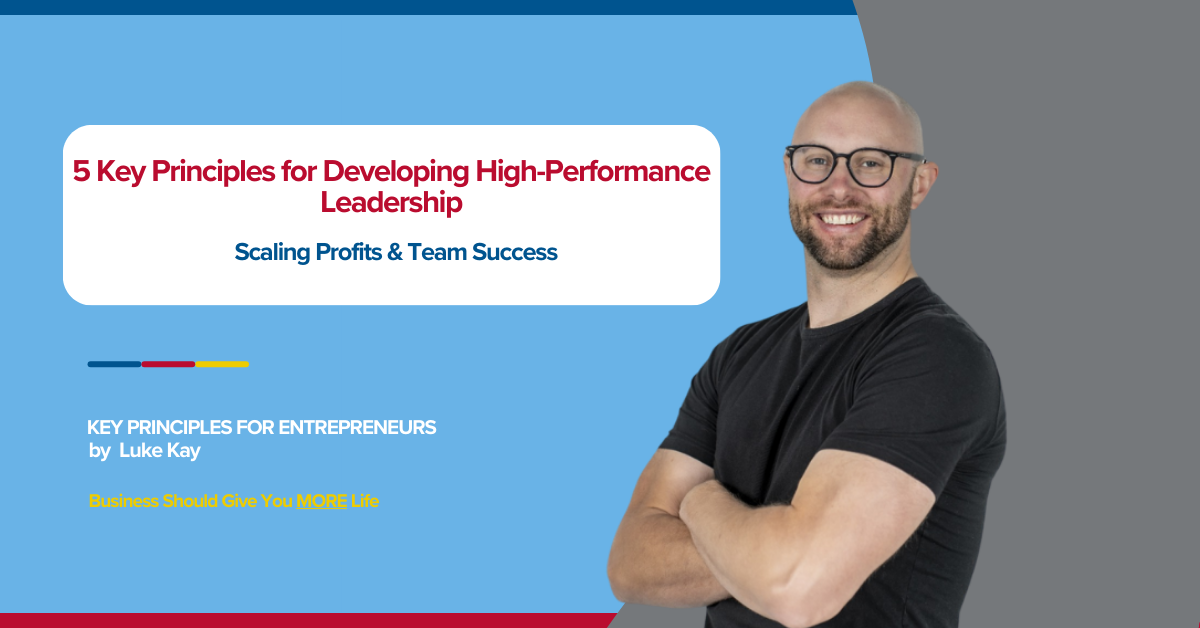Great businesses aren’t built by bosses—they’re built by leaders who inspire action, drive results, and create a culture of accountability.
Weak leadership costs businesses millions in lost productivity, high staff turnover, and poor decision-making. But when leadership is strong, clear, and results-driven, teams perform at their best, morale stays high, and the bottom line grows.
So how do you go from managing people to leading them to high performance and profit? Let’s break it down.
The Cost of Poor Leadership vs. The Power of Strong Leadership
Look at the Post Office Horizon Scandal—one of the UK’s biggest corporate failures. Leadership ignored red flags, dismissed concerns from employees, and pushed blame down the chain, resulting in over 700 wrongful convictions and huge financial losses. This wasn’t just a legal disaster—it was a failure in leadership. A company culture built on fear, poor decision-making, and lack of accountability cost them everything.
Now, contrast that with Greggs, the UK’s most beloved bakery chain. When CEO Roger Whiteside took over, he didn’t just focus on selling more sausage rolls—he focused on developing strong leadership at every level. By empowering store managers, driving accountability, and making data-driven decisions, he transformed Greggs into a £1.5 billion business, proving that great leadership directly impacts profitability.
Let’s get into it and break down a few simple strategies for Business Growth & Profitability through great Leadership.

Key Principle #1. Set Clear Expectations & Hold People Accountable
Leadership isn’t about giving orders—it’s about setting clear goals and ensuring everyone is accountable for their part in achieving them.
It’s about creating clarity so your team knows where you’re heading and what success looks like. When people understand the bigger picture and how their role fits into it, they’re more engaged, motivated, and productive.
Great leaders don’t micromanage—they support, coach, and course-correct when needed, keeping everyone aligned and focused. It’s not about being the boss—it’s about being the guide.
Key Principle #1 Case Study: JD Sports
As one of the UK’s biggest retail success stories, they built a leadership structure that tracks performance at every level—from store managers to corporate executives. Every team member knows their targets, and those who deliver are rewarded, while those who don’t get coached to improve. This results-driven leadership approach helped JD Sports hit record-breaking profits year after year.

Key Principle #2. Lead by Example—Don’t Just Manage from the Sidelines
Your team will never work harder than you do. If you want a high-performance culture, you need to show up, put in the effort, and lead from the front.
That means being the first to embrace change, the one setting the tone, and the one walking the talk—not just talking the talk. If you cut corners, they will too. If you show up with energy, focus, and a clear plan, your team is far more likely to follow suit.
Culture isn’t what you say in meetings—it’s what you do every single day. So if you want them all in, you’ve got to be all in first.
Key Principle #2 Case Study: Timpson, the UK’s famous key-cutting and shoe-repair business.
CEO James Timpson is known for visiting stores, talking to employees, and personally investing in their development. This leadership approach has created a culture of trust, high performance, and strong employee loyalty, leading to sustained revenue growth and industry dominance.

Key Principle #3. Make Data-Driven Decisions, Not Emotional Ones
High-performance leaders don’t guess—they use numbers to guide their decisions.
This cuts down risks and boosts success since it’s based on real facts, not just feelings. By checking important stats about their business, they see what’s going on, catch issues early, and jump on good opportunities. This data focus also helps them see how they’re doing, if their plans are working, and tweak things if needed to stay on track.
Key Principle #3 Case Study: Aston Martin
Under the leadership of CEO Lawrence Stroll, they shifted their decision-making approach from instinct-driven to data-backed strategies. By analysing market trends, customer behaviours, and financial projections, Aston Martin optimised production, cut unnecessary costs, and skyrocketed revenue—taking the company from near bankruptcy to record-breaking profits.

Key Principle #4. Empower Your Team to Make Smart Decisions
Great leaders don’t micromanage—they train their teams to think independently and act decisively.
This approach promotes a sense of ownership and accountability within the team, leading to increased productivity, innovation, and overall organisational success.
Key Principle #4 Case Study: Ocado
The UK online grocery giant, built a leadership structure that allows team members to innovate and solve problems on their own. Instead of forcing all decisions through upper management, they created a culture where employees are trusted to take ownership of challenges. The result? Faster decision-making, higher productivity, and continuous growth—leading to a valuation of over £5 billion.

Key Principle #5. Invest in Leadership Development at Every Level
Strong businesses don’t just develop leaders at the top—they invest in leadership at every level, from entry-level employees to senior executives.
Because here’s the thing: leadership isn’t just about job titles, it’s about mindset and action. When every team member is encouraged to take ownership, communicate better, and think one step ahead, the whole business runs smoother and grows faster. You build a culture where people step up—not because they have to, but because they want to. And that’s when real momentum kicks in.
Key Principle #5 Case Study: BT Group (British Telecom)
They implemented leadership development programmes for managers at all levels, ensuring that their frontline supervisors were just as capable as their C-suite executives. This long-term investment in leadership directly contributed to higher employee retention, improved customer service, and increased revenue.

How to Implement High-Performance Leadership in Your Business
- Set clear goals & track accountability—Make sure every team member knows their targets and how they contribute to the company’s success.
- Lead by example—Your team will mirror your work ethic and attitude. Show them what high performance looks like.
- Make data-driven decisions—Use real numbers to guide strategy, not just gut instinct.
- Empower your team to take ownership—Stop micromanaging and let your team solve problems independently.
- Invest in leadership development—Train leaders at every level to build a culture of accountability and success.
Is Your Leadership Driving Profits—Or Holding Your Business Back?
If your team isn’t performing at their best, if decision-making is slow, or if you feel like you’re always chasing results instead of leading with confidence, it’s time to upgrade your leadership approach.
Take Action
Let’s get into it and take apart your leadership strategies and create a framework that turns your team into a high-performance, profit-generating machine.
We’ll look at what’s working, what’s holding things back, and where you can lead with more clarity and confidence.The goal? To build a team that doesn’t just follow instructions—but thinks like owners, takes initiative, and drives real results. You don’t need more hours in the day, just sharper leadership and a solid plan—simple, practical, and with a clear return on your time and energy.
Book a free Business Discovery Call today and let’s work on the leadership potential in your business and drive real results.
Come to An Event
Every month as part of our Entrepreneurship Academy and 1-2-1 Business Coaching programmes, we bring together driven business owners for expert-led events that spark ideas, create focus, and drive growth.
Come along and get a taste of what ActionCOACH is all about—support, systems, and strategy that actually works. Where it’s one of our quick-win half day MasterCLASSes or an absolute game-changing 90-Day planning day, you’ll walk away with clear actions and a solid plan on how to move your business forward.







